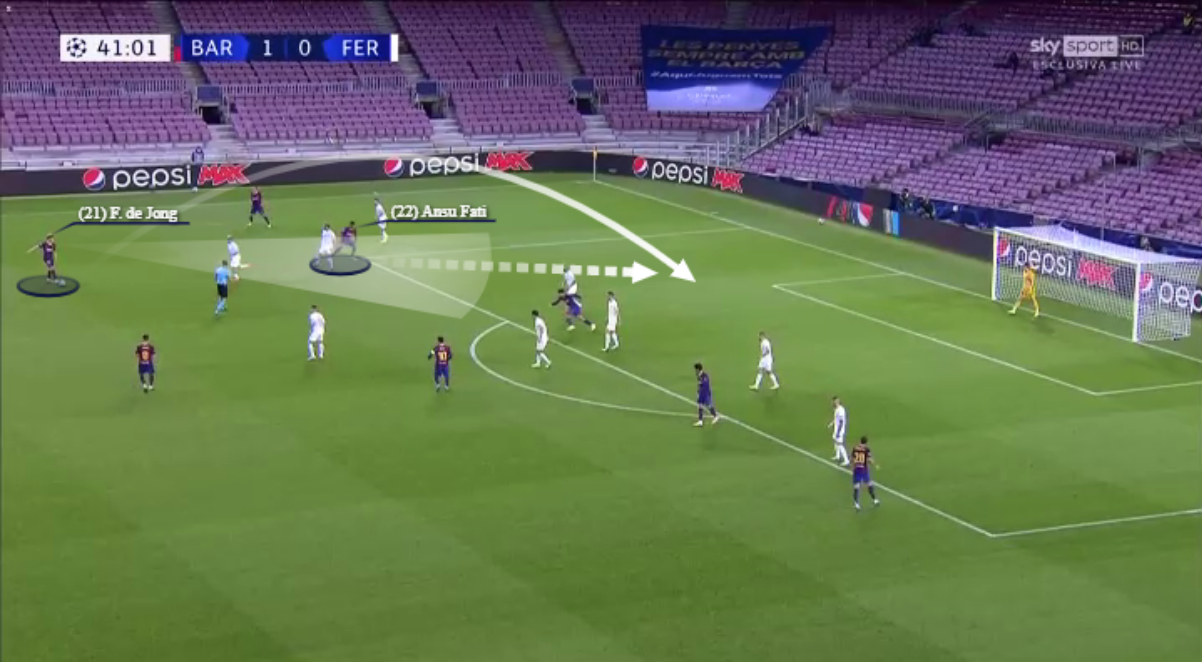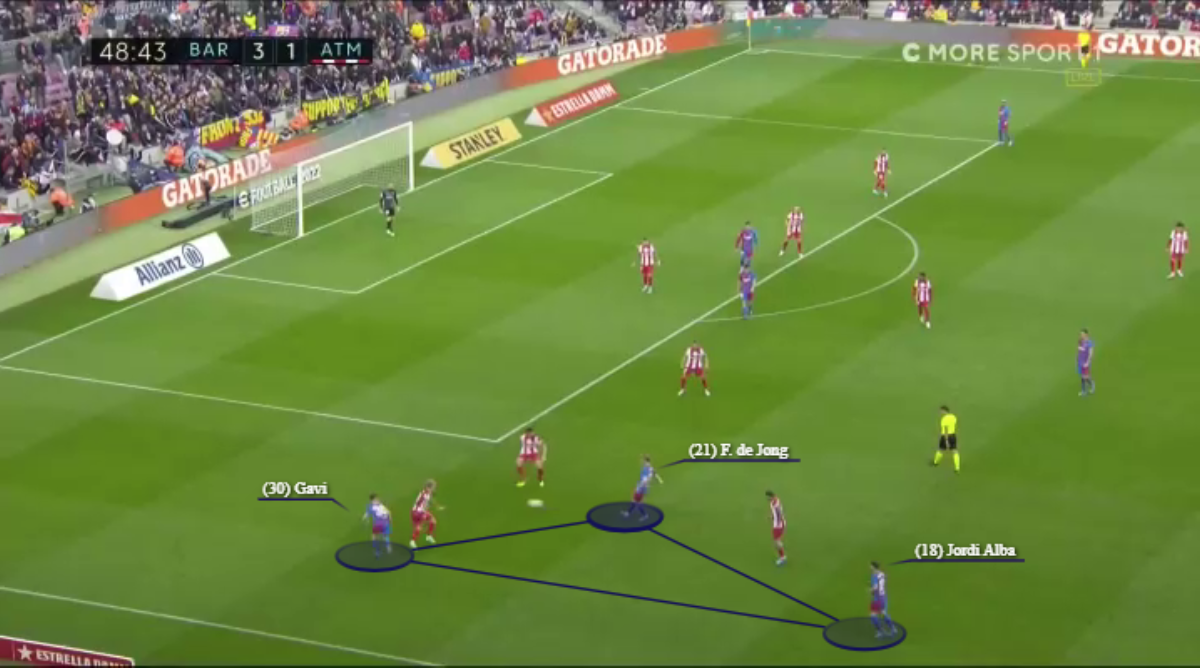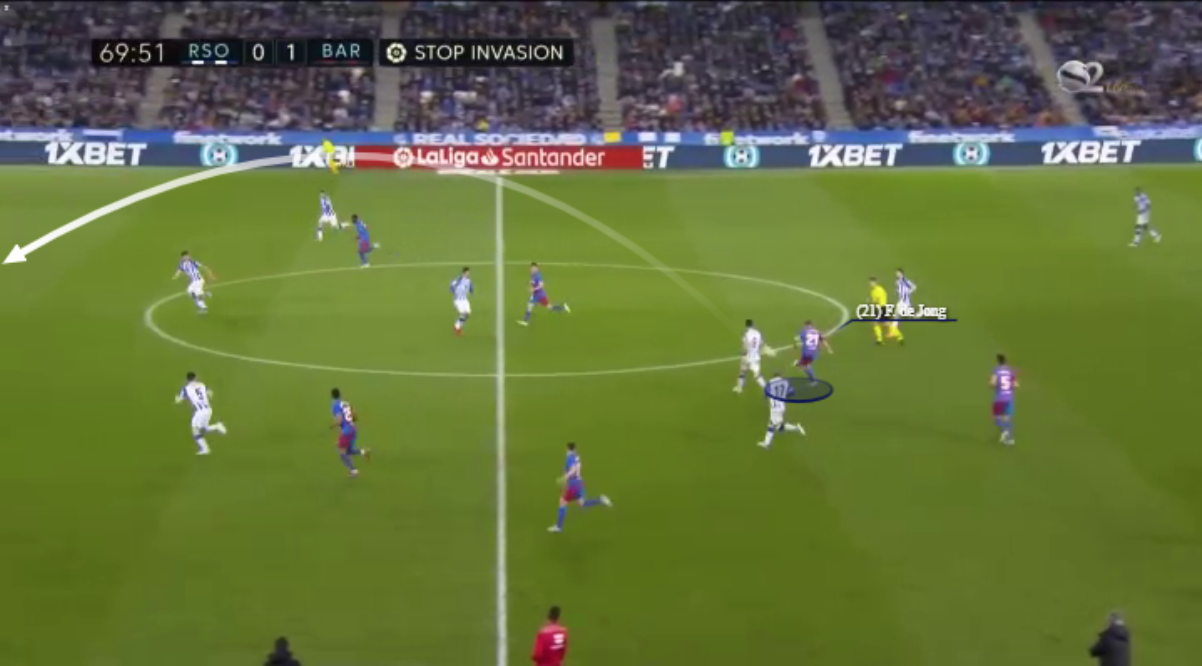Frenkie de Jong and Erik Ten Hag’s Desperation to Bring Him to Manchester United
Frenkie de Jong’s Barcelona career has been far from straight forwards, being asked to play in unfamiliar positions and unable to strike consistency amid the Catalans’ off-the-field issues.
Yet whilst his inconsistency has been clear for all to see, new Manchester United boss Eric ten Hag seems insistent that he wants to reunite with de Jong. His firm belief that the Dutchman can be the marquee signing in his Red Devils revolution means that ten Hag feels he can bring the best back out of the midfielder.
During their time together at Ajax, de Jong began as a centre-back to cover the void left by Davinson Sanchez following his move to Tottenham Hotspur, partnering Mathias de Ligt at the back.
He certainly wasn’t the conventional fit for a role in the defensive line, but stood out with his ball-carrying and runs out of defence to draw the opposition in and create space. But his role at centre-back was inevitably temporary and it was ten Hag who moved him forwards into midfield.
The boss ordered Ajax’s first phase of progression to happen down the left-hand side, aided by the overlapping full-backs. De Jong would then fill the gap left by the left-back, usually Nicolas Tagliafico and play in the half-space behind him.

The Dutchman became a dual threat in possession, especially in those deeper areas, with de Jong capable of carrying forwards, being able to suck the opposition in and create gaps in their usually rigorously organised line or even passing short to shift the opposition into creating a press.
When Ajax moved up the field, the youngster would act as a release valve for their attacks, occupying a space on the left hand side of the box with the traditional purpose of recycling the ball when necessary.
Despite this ‘recycle’ role, de Jong was also fully capable of splitting defences with inventive through passes or pin-point lobbed balls.
The midfielder also had the most touches of the ball in Ajax’s Champions League semi-final first-leg win over Tottenham Hotspur with 87, de Godenzonen’s first semi since 1997.
The way Ten Hag utilised de Jong acts as a marker for what could be reproduced at United should the move go through, but under Xavi at Barcelona, the midfielder took on a slightly different role.
In some respects, de Jong became more advanced but was actually signed as a possible successor for Sergio Busquets. The true form of a regista, the Spaniard has occupied the base of Barcelona’s midfield since his promotion to the first team from their B-team.
Despite this, many were tried in that role by Pep Guardiola before they eventually found him, often attempting to shoehorn the likes of Xavi and Andreas Iniesta before realising their potential further up the field and deciding against it.
A similar occurrence happened with de Jong, with them trying to move him into the holding midfield spot. But the Dutchman wasn’t quite suited in the classic regista role where the player and was utilised best when able to drift into the left channel behind Jordi Alba.
His first season got off to a bright start, but that light was immediately dimmed as he was forced to plod along into the monotony of the football under Ernesto Valverde and Quique Setien.
Christian Eriksen – How Does the Dane Fit Into Erik ten Hag’s Manchester United?
But as Xavi took over de Jong moved over to the right of midfield, with a more advanced role and almost accidentally became a complete midfielder – de Jong began to produce those all-important contributions.
The Barcelona legend encourages the full-backs to invert and come inside to create midfield overloads, this allows de Jong to move into those advanced positions and create the chances.
The Dutchman still has the inconsistencies, perhaps in line with the Catalan side as a whole but has seen a marked improvement in his goal contributions under Xavi, grabbing seven goals and four assists during the Spaniard’s first season in charge.

His assist during their 5-1 victory over Ferencvaros in the Champions League in 2020 remains a crème de la crème of lobbed through balls.
A ball inside reaches de Jong, who immediately spots the run of Ansu Fati who finds the space on the inside right channel of their defence, tapping the ball past the goalkeeper.

When de Jong rotates through the midfield, he still finds those passing triangles, but occasionally progresses beyond the full-back, in the opposite fashion to his time at Ajax where he lay deeper than them.

His diagonal balls continue to be a critical option during his side’s possession phase, particularly when playing in Xavi’s ever so slightly more pouncing style of play. Often choosing those longer balls in order to find the front-line with passes in behind.
As for his move to Manchester United, ten Hag is still extremely keen to add de Jong to his ranks and considers him a huge building block in his new project at Old Trafford. Despite this, de Jong doesn’t exactly offer the profile of midfielder United are looking for with him not being that natural ball-winning midfielder that they’re scouring the market to find.
He’d work best alongside that ball-winner, but will revert back to his old Ajax role, interchanging with a racing left-back. That explosive full-back will be Tyrell Malacia, recently signed from Feyenoord, with de Jong having the possibility of filling in whilst the defender races down the touchline.
Erik ten Hag could be the man to bring him back into form if they’re able to reunite, but remarkably for a player of his quality, he’s only likely to be a small part in this huge Manchester United rebuild.
By Louis Bent / @louisbent_
Featured Image: @GabFoligno / Quality Sport Images / Getty Images
Data and Analysis via WYSCOUT
